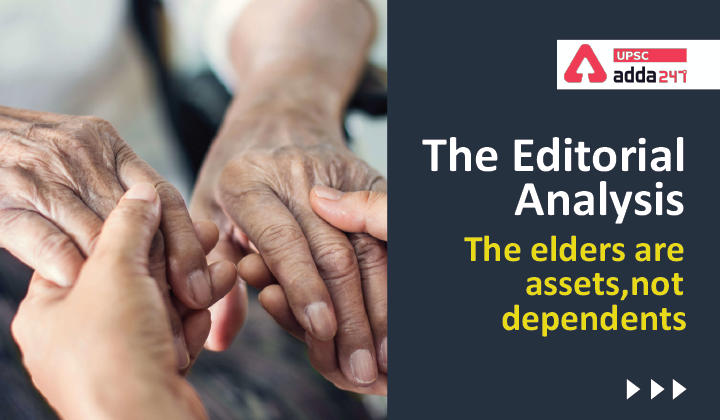Table of Contents
Elderly issues: Relevance
- GS 1: Salient features of Indian Society, Diversity of India
Elderly population in India: Context
- Countries around the world is focusing on demographic dividend—a blessing in disguise of population explosion.
Senior citizens in India: Key points
- In India, the government is taking various measures for the young generation, ranging from education, entrepreneurship, sports training to innovation and entrepreneurship.
- NFHS-5, however, indicates that while much progress has been made, the metrics for infant and child health continue to be dismal.
- Though attention should be paid on the young generation for the benefits they would accrue if given the right platform at the right time, focus should also be on the elderly population (those above 60 years of age) of the society.
Focus on the elderly population: Why needed?
- Life expectancy in India has risen from 50 (1970-75) to 70 years (2014-18);
- The number of elders is already 137 million, and expected to increase by 40% to 195 million in 2031, and 300 million by 2050.
Elders: Assets or dependents?
- While one perspective would look at them as dependents, a rather different view would look at them as a potential asset: a massive resource of experienced, knowledgeable people.
- Converting them from dependents to productive members of society depends on two primary factors: their health and their capabilities.
Issues of elderly population
- Familial neglect, low education levels, socio-cultural beliefs and stigma, low trust on institutionalised health-care services and affordability exacerbate the issues of elderly population.
- As per the first ever Longitudinal Ageing Study in India (LASI), 11% of the elderly suffer from at least one form of impairment (locomotor, mental, visual and hearing).
- Cardiovascular disease (CVD) prevalence is estimated to be 34% amongst 60–74-year-olds.
- Inadequate government schemes: A NITI Aayog report indicates that 400 million Indians do not have any financial cover for health expenses. Despite Ayushman Bharat, and pension schemes by Centre and States, a very large number of elders are among the uncovered.
- No bed/ward dedicated to elders: a status report filed by the Government in the Supreme Court of India in 2019 stated that 16 States and Union Territories did not have a single ward/bed dedicated to elders.
Steps needed
- Provide quality, affordable, and accessible health and care services to the elderly.
- Senior first approach: COVID Vaccination, first to seniors, portrays an image of caring State towards its elderly population.
- Creation of adequate services for them as they require the most diverse array of health-care services.
- Increase public health-care spending, and invest in the creation of well-equipped and staffed medical care facilities and home health-care and rehabilitation services.
- Accelerate and expand implementation of programmes such as the National Programme for Health Care of the Elderly (NPHCE), Ayushman Bharat and PM-JAY.
- Digital literacy campaigns: To achieve the objectives of National Digital Health Mission.
Also Read:




 TSPSC Group 1 Question Paper 2024, Downl...
TSPSC Group 1 Question Paper 2024, Downl...
 TSPSC Group 1 Answer key 2024 Out, Downl...
TSPSC Group 1 Answer key 2024 Out, Downl...
 Cabinet Ministers of India 2024, New Cab...
Cabinet Ministers of India 2024, New Cab...







